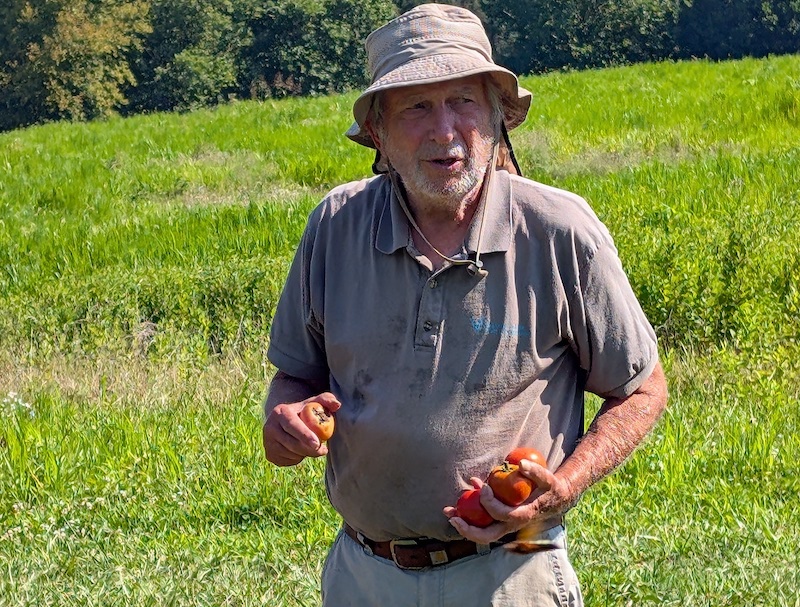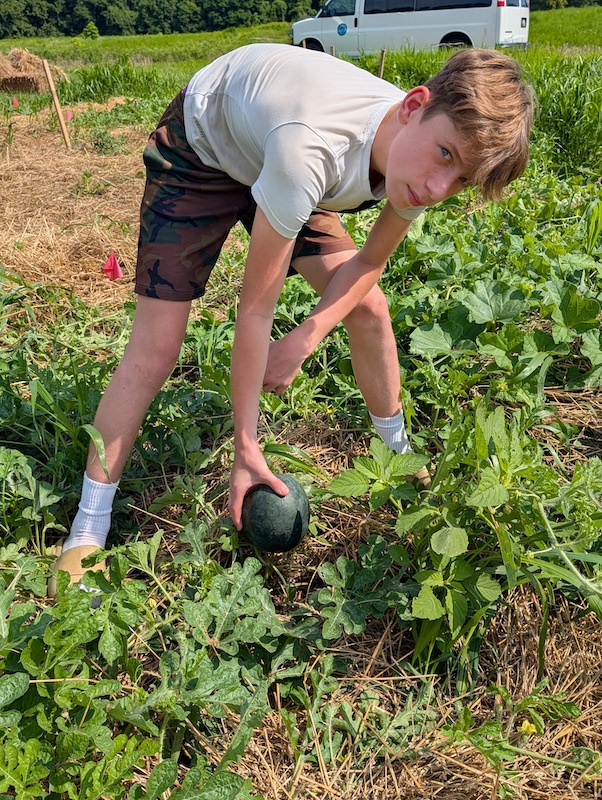What does a former Republican Congressman do when he leaves Congress? Create a program to teach the next generations about environmentalism, of course.
Sassafras Environmental Education Center (SEEC), which Wayne Gilchrest started in 2010, has morphed over the years, but it remains rooted in Turner’s Creek soil. Gilchrest, whom everyone in Kent County knows as “Wayne” no surname needed, has had as many as 2800-plus students annually come to kayak the Sassafras, comb through the trails along the creek, and tend a garden that boasted a stand of teosinte, a grass believed to be the progenitor of the corn we see today. Now, at 79, he’s downsized the program to a summer Parks & Rec-sponsored garden-and-environmental camp for elementary and middle school groups. The groups each come to the garden once a week in summer to plant and tend their plots and while they’re at it, to learn about regenerative agriculture.
“I just love teaching about regenerative farming and gardening techniques,” Wayne says. “And how vital they are to our world and our existence. If more people knew about how this all works, they’d appreciate it much more.”
The garden, planted on Kent County land a stone’s throw from Turner’s Creek, is totally organic.
“We use no pesticides or fertilizer,” Wayne explains. Instead, they use straw mulch, manure and compost and as a result draw pollinators and beneficial bugs for integrated pest management (IPM). The main water sources are rain and dew, though they can supplement when needed.
It’s a beautiful breezy Monday morning. As a result of recent rains, the plots, untended for several days, are virtually buried beneath a sea of thigh-high weeds that Kent County Master Gardeners (KCMG’s) Eileen Clements and Liz Sipala attack just before the kids arrive. Kent County Extension Agent, Beth Hill, and Snap Educator, Eric Fitch, arrive and join them in what is essentially a produce treasure hunt. Pretty soon, thanks to beautifully friable soil, the treasure – the plants that the kids put into the ground in mid-June and the vegetables and fruits growing on them – are emerging.
By the time the van with the kids arrives, they can scour their now-semi-discernable garden plots for produce. Thirteen-year-old Taylor, who is spending the summer in Kent County with her dad and stepmother, finds some cucumbers half-hidden in a sprawling vine in her plot. She uncovers several yellowed, over-the-hill cukes, but she also finds a couple that are just ready to pick and takes one to share with another of the kids. Together they break it in half and chow down, grinning.
“I love being here,” Taylor says. “I’ve learned weeding and can help my mom and help my stepmom and dad while I’m here this summer. It’s a different environment. Where I live [in North Carolina] is more crowded.”
In between talking with the kids and pointing out ripening produce, the Master Gardeners continue to yank out clumps of the grassy weeds, in the process discovering ripe peppers, tomatoes, and a lone cantaloup.
Thirteen-year-old Tatum, whose granddad has a vegetable garden, walks across the straw, looking around to see what’s been unearthed. He stops at his watermelon plant, which is rapidly invading other plots like something out of a sci fi movie. Gently searching through the leaf-thick vines, he finds five midnight green melons.
“You wanna see my watermelons?” he calls to me.
“Yes, I do!”
I come over, and he proudly points out five beautiful Sugar Babies in various stages of growth. He gently hefts the largest, a couple of weeks away from maturity, without disturbing the vine. Photo op. Big grin.
While Wayne, a seasoned teacher, is casual in his approach, he is clear about what he is working to convey. Several weeks before, he had had the kids do an “Undie Challenge,” which consisted of burying (new, clean) cotton underpants in the garden.
“It’s part of a lesson on how microbes in the soil help to biodegrade organic materials like cotton,” explains Master Gardener Debbie Viadero-Rogers, who volunteers there along with Clements, Sipala, and Secethia Bordley-Davis. The kids will dig them up in several weeks to see their condition. “Wayne explained that if they’re full of holes, it means the soil here is healthy.”
Although Wayne’s had plenty of outdoor ed experience, he knows he needs the help. More perspectives, more varied knowledge, more hands.
“I couldn’t do this without the Kent County Master Gardeners,” he says later.

His program, which aims to convey scientific specifics including photosynthesis and biodegradability, is broad in scope – he wants them to absorb the interdependence of nature, plants, food, and the health of the planet and us. But he doesn’t do it through books. It’s experiential learning coupled with instruction. This garden and the woods and trails are classroom and visual aid. He simply points things out to them using whatever’s at hand.
“Wayne is the best teacher,” says Clements, a former high school art teacher. “He doesn’t talk down to the kids. Wayne had two maps: one a physical map and the other a political map. He was explaining to the kids that plants and animals – more importantly pollinators – don’t respond to the manmade boundaries that we humans impose. That’s the reason plants that may have started in one place can often end up in far flung spots. The kids got it.”
But in addition to the scientific knowledge, he wants to inculcate a sense of wonder.
“We go through bugs and birds to other animals,” Wayne says, “and the mysterious magical way that the plants use the sun and turn it into everything you need to exist. It’s a miracle of Nature’s design.”
Today, after the kids check in, tromp around the garden, pick and examine a pepper and some tomatoes and cucumbers and generally gaggle about a bit, Wayne gathers them and asks who wants to take a walk with him. His walk will be a conversation about what they see, hear, smell, and think as they trail through the shady woods to end up at the creek, where the fabulous American lotus is considering this year’s bloom. Another miracle.
Read more about Wayne Gilchrest ad SEEC.
Longtime journalist and essayist Nancy Taylor Robson is also the author of four books: Woman in The Wheelhouse; award-winning Course of the Waterman; A Love Like No Other: Abigail and John Adams, a Modern Love Story; and OK Now What? A Caregiver’s Guide to What Matters, which she wrote with Sue Collins, RN.





Judy Gifford says
What a wonderful story! Thank you Nancy for sharing Wayne’s gift with us and giving us a glimmer of his hope and optimism .
Nancy Robson says
Thanks, Judy. He just keeps doing well by doing good. An encouragement to me at least, and many of the rest of us.
Deirdre LaMotte says
Wayne is a wonderful human being in every way, and he is the best Representative our District has had for years!!!!
Remember MOC who cared?!